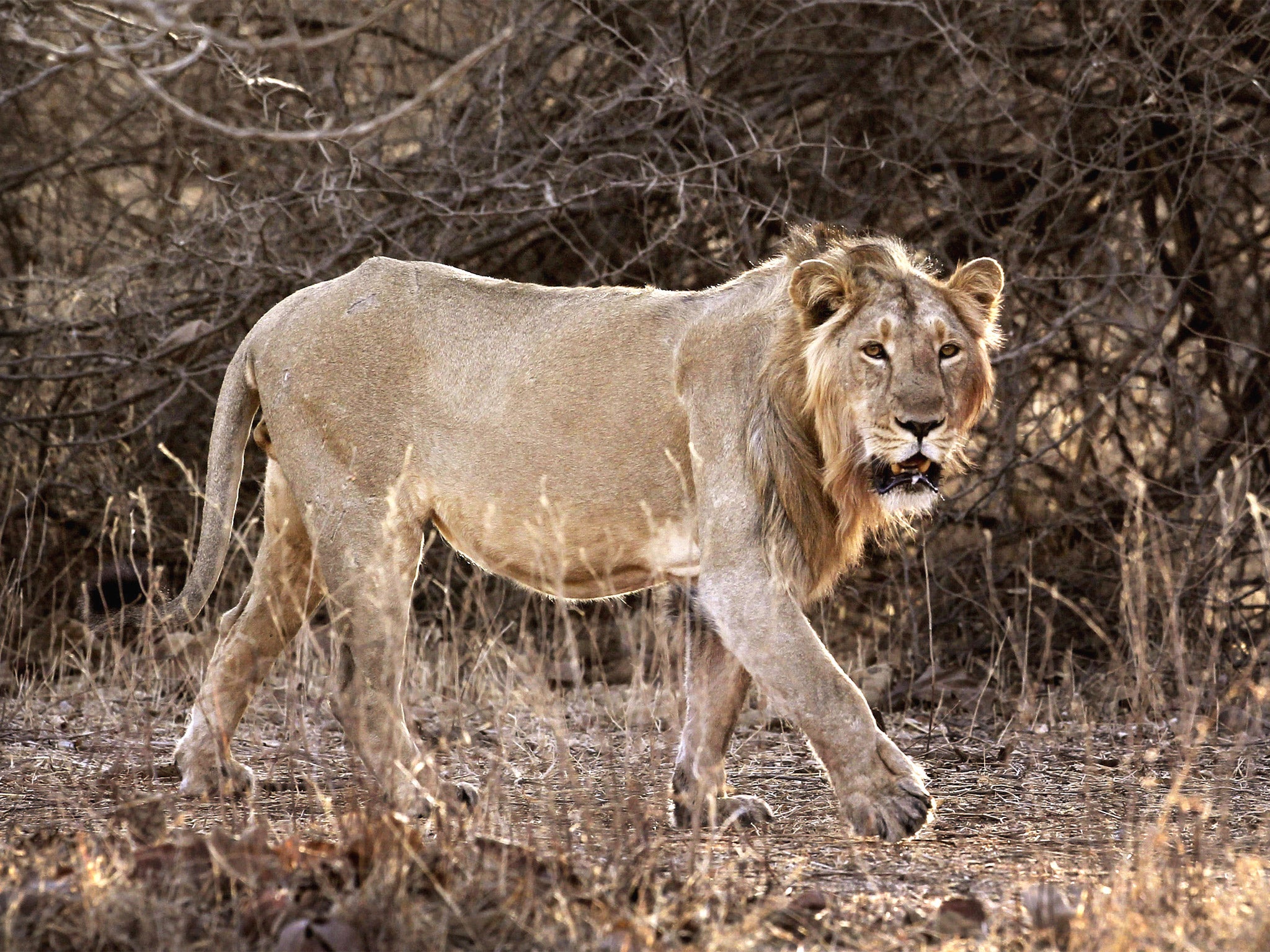Wounded pride of Gujarat: Defeat in fight to prevent relocation of Asiatic lions
Indian Supreme Court rules other populations should be established in neighbouring states

Your support helps us to tell the story
From reproductive rights to climate change to Big Tech, The Independent is on the ground when the story is developing. Whether it's investigating the financials of Elon Musk's pro-Trump PAC or producing our latest documentary, 'The A Word', which shines a light on the American women fighting for reproductive rights, we know how important it is to parse out the facts from the messaging.
At such a critical moment in US history, we need reporters on the ground. Your donation allows us to keep sending journalists to speak to both sides of the story.
The Independent is trusted by Americans across the entire political spectrum. And unlike many other quality news outlets, we choose not to lock Americans out of our reporting and analysis with paywalls. We believe quality journalism should be available to everyone, paid for by those who can afford it.
Your support makes all the difference.For generations the authorities in the Indian state of Gujarat have ferociously guarded their prized Asiatic lions – a rare and treasured animal that features in the national emblem.
Having set in process a breeding programme that saw the lions’ population rise from just 50 to more than 400, the state’s political leaders have repeatedly clashed with those demanding that some of the animals be relocated to other parts of India.
But this week, the Supreme Court of India sided with the experts who said it was better for the future of the lions if other populations were established. As a result, some of the animals will be moved to the neighbouring state of Madhya Pradesh within the next six months.
“We are of the view that the… Asiatic lions should have a second home to save them from extinction due to catastrophes like epidemic and large forest fires,” the court said.
The opposition to moving some of the lions from the Gir forest to an alternative location was led by Gujarat’s powerful Chief Minister, Narendra Modi. Four years ago, Mr Modi had a public clash with the then Environment Minister, saying that unlike other Indian states where wildlife such as the tiger was struggling, his state had managed to protect its large cats. “Lions are the pride of Gujarat,” he said. The domain of the Asiatic lion – which is smaller than its African cousin – once reached from Greece to the north-east of India but it was repeatedly pushed back by hunting and habitat destruction. Today, around 60,000 visitors a year visit the lions in the Gir forest.
A breeding population of the lions will now be transferred to the Kuno game sanctuary in Madhya Pradesh. According to the Associated Press, state representatives said a proper environment for the animals had been created in Kuno. Precisely how many animals are to be moved is yet to be decided. Environmentalists have welcomed the move, saying the forest in Gir is getting crowded and making the animals more vulnerable to disease. They claim that establishing a new community can help reduce inbreeding. “This has been going on for 20 years,” said Belinda Wright, of the Wildlife Protection Society of India. “From a solid conservation point of view, it’s not a good idea to have an entire population of a species in one area.”
Sheren Shrestha, of the Wildlife Trust of India, said it was true that the authorities in Gujarat had done well in establishing the breeding programme that had been so successful. “They are saying they have been doing a good job and that is true but the fact of the matter is that you need more than one population,” he said.
While on this issue the court ruled in favour of the state of Madhya Pradesh, which says it has spent large sums to establish a place for the lions, it rejected a plan by the Minister of the Environment to proceed with a plan to reintroduce cheetahs.
At the turn of the 20th century, there may have been as many as 1,000 Asiatic cheetahs in India, where they were known as hunting leopards. But the last tiny population of the sub-species is confined to Iran’s Kavir desert. It is commonly said that the last three cheetahs in India were shot dead by the Maharaja of Surguja, the ruler of a princely state in the east of Madhya Pradesh. Campaigners behind the plan to introduce cheetahs from Africa, say that unlike the Indian and African elephants, there is little difference between the Asiatic and African cheetahs.
Join our commenting forum
Join thought-provoking conversations, follow other Independent readers and see their replies
Comments